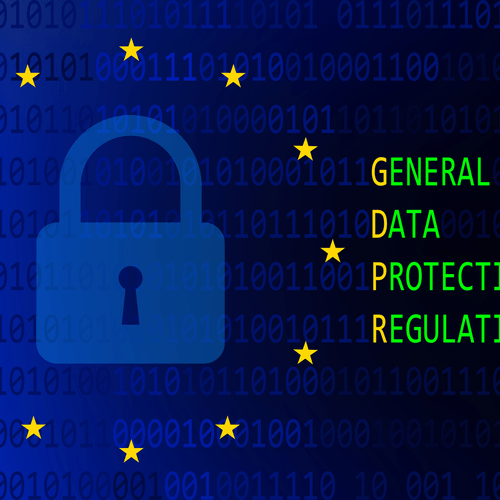- September 7, 2021
- Posted by: innovety
- Category: Software development
If you’ve spent a few decades or more on this earth, you can probably clearly remember the screeching dial-up sounds of modems from long ago. There are several reasons that they sometimes get spoken about as if they are the same thing. Firstly, and probably most obviously, is the fact that despite my statements above, no one is really entirely sure exactly what either of them is yet. As this system is in the developing stage, we have to continuously observe this world whether it widens the difference gap or wants to assimilate in the near future. Virtual environments have been standardized in a number of projects.
- Web 3.0 focused on creating a decentralized web that would rely on blockchain and cryptocurrencies only.
- It is EVM-compatible and utilizes common languages like Java, JavaScript, Go, and .NET, making it an ideal solution for web3 developers.
- This means that rather than relying on centralized servers, Web3 is built on a peer-to-peer network of computers.
- Participants are able to utilize various functions in the distinct digital environments of the metaverse.
- Both Web 3.0 and Metaverse provide immersive experiences to their users.
Unlike the current internet age, where big tech companies control and restrict services, Web3 does not require permission and internet providers do not have the authority to impose their will on users. It addresses the key issues of data ownership and control, providing users with the ability to own their data and trade them freely. Web 3.0 uses mostly blockchain technology; users are connected through decentralised networks. Meanwhile, the Metaverse integrates various technologies, including virtual reality, augmented reality, blockchain, digital experience, and interactive interfaces. As such, the Metaverse is more complex and requires a robust, well-planned ecosystem. Web 3.0 is composed of decentralized networks supported by blockchain technology.
An Insurance Playbook for Every Startup
Some are developers hoping to use the ecosystem to build business-specific products, while others are looking for methods to make money. With the help of Metaverse, anyone can build a relevant project on it. Similarly, ordinary users in the ecosystem can generate and exchange NFTs to make money. Understand what web 3.0 and metaverse are, their technological clash and amalgamation of each other and how they can power the future internet. Instead of interacting with 2-dimensional applications on a mobile phone or browsing through the web flipping through pages or tabs, these websites are transformed into 3-dimensional objects.

Meta’s developments in AR/VR and motion sensing technologies do not undermine the work of Web 3 and decentralization. In fact, the best-case scenario is that people start building Web 3 applications within the emergent 3D form factors of AR/VR and holographic projections. Although a purely decentralized model of the internet sounds enticing, there is impracticality to it.
Video games
The Metaverse is, in many ways, the tangible outcome of a Web 3.0 environment. The term encompasses the virtual worlds and assets built on Web 3.0 decentralized infrastructure. By pulling further still at the fabric of the web, the aim is to do away with centralized control and develop an ecosystem where users work collectively to democratically govern the internet’s direction.
Just start a campaign and get people to vote for the changes you want. It’s a far cry from the digital dictatorships, where corporations make the laws, and we can either like it or leave. And thirdly, and perhaps most significantly, https://globalcloudteam.com/ another reason that they are often conflated with each other is that they cross over in some very important ways. The integration of Web 3.0 and the Metaverse can create a more seamless and secure digital experience.
Wiser! #121: Google’s AI Search | Autonomous AI | Meta’s Dancing Animations | MicroStrategy’s Bitcoin Strategy
Web3 is generally viewed through the lens of decentralized finance . While it’s true that blockchain technology enables seamless global payments and enhanced financial security, web3 has many applications. In theory, anything you can do with web2, you should be able to do with web3. The blockchain is well-suited to enhance visibility within supply chains, and it can be used for gaming and social media.
Any claims or offers suggesting otherwise are false and should be disregarded. If you want to succeed with a Metaverse initiative, you need to understand the importance of Web 3.0 and, more importantly, the technologies and philosophies that support it. So, the first step in navigating Web 3.0 and the Metaverse is understanding what makes them differ.
The Important Difference Between Web3 And The Metaverse
So, instead of browsing through an apparel store or an online sports shop, the website is transformed to a 3-dimensional building or mall, where users interact with it as in-game characters or avatars. Instead of flipping through pages on a web browser, users will be able to interact virtually and immerse themselves in the virtual building. Not only that, they will be able to walk or virtually teleport vr development from one “website” to the other but in 3-dimensions. The next level is integrating Virtual reality headsets which will push the experience to another level where users can then “feel” & interact with objects and other users virtually. So the concept of the Metaverse would be like a more interactive & immersive internet where users will be able to jump from one virtual world to the other.

This system allowed many Second Life designers to earn significant dollars in real life, with the virtual world’s first millionaire, Anshe Chung, being announced during that time. You can think of it as a set of rules applicable for every internet user. Therefore, it is quite clear that web 3.0 would be applicable throughout the web rather than for specific applications. Imagine shopping for clothes in a digital store as an avatar by trying out the clothes for checking the fit. The metaverse would basically combine different digital spaces in a world where users could move seamlessly between the different spaces. The different digital spaces in the metaverse can allow participants to leverage unique functionalities.
Introducing Voicebox: Enabling Multilingual Speech Generation and Innovative Editing
In addition, the thought of avatars exploring the vast virtual environment appeals to users. Web 3.0 vs metaverse comparison would be the underlying technology in both of them. The metaverse has different crucial technologies for enabling the whole ecosystem. You would need connectivity, interfaces, decentralization, creator economy, experiences, and enabling technologies for developing the metaverse. The possible uses of web 3.0 and metaverse would also be a significant distinction between the two.

We may not know exactly what the future of Web 3.0 and the metaverse will look like, but we do have an idea of how investors can benefit from these concepts. The best way to get involved is to invest in projects actively developing the metaverse and Web 3.0. Fortunately, SMART VALOR gives investors access to some of the most interesting blockchain projects involved in this megatrend. Also, both entities will likely use artificial intelligence to create a more seamless experience. We can expect Web 3.0 to use AI for semantic correlations and the metaverse to use AI for 3D construction.
